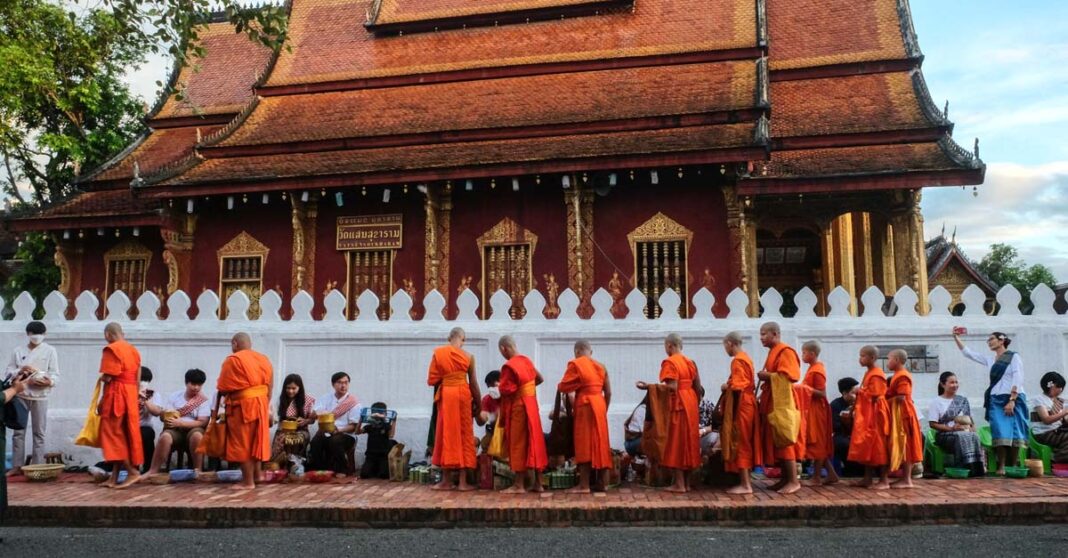Luang Prabang, the UNESCO Heritage City of northern Laos, has seen a surge of interest from Thai tourists in recent weeks amid celebrity trips and curiosity about the Laos-China Railway.
The picturesque town, noted for its French colonial era architecture and serene mountain vistas, had remained relatively quiet until Laos reopened its borders in May this year. Now, accessible by air and rail, Luang Prabang is being inundated with tourists from Thailand.
Following in the footsteps of trailblazing Thai celebs, tourists from the neighboring Kingdom have been trying out trips on the brand new Laos-China Railway and heading to the northern city in droves.

Mr. Vongdavon Vongxayalath, Head of Luang Prabang Provincial Tourism Promotion Department, told local media that almost 100,000 people have visited Luang Prabang in the first six months of the year.
This began with mostly domestic tourists, but now includes visitors from Thailand, South Korea, and other countries. More recently, up to 90 percent of rooms have been booked out by individual visitors and tour operators.
Mr. Somsak Phouthavong, Manager of Mina Travel, told the Laotian Times that “We have received a lot of bookings for group tours from Thailand this month.”
He says that while most of these have booked their accommodation in advance, accommodation is filling up quickly.
And many of these group tours start their activities with a trip to Luang Prabang via the high-speed Laos-China Railway, a key link in the global chain of China’s Belt and Road Initiative.

However, the railway’s anachronistic manual booking system, which lacks advance reservation capability, has caused headaches for tour operators, who must rush to purchase tickets as their tour groups arrive.
Somsack says travel operators have made appeal after appeal to authorities to implement an online system, but have not had much much success.
While the railway company has acknowledged the problem, it has simply stated that such a system will be implemented “soon.”
Nevertheless, the increase in tourism to Luang Prabang has brought the hustle-and-bustle back to the city, creating new opportunities for local businesses. Hotels, restaurants, and tour operators who had lain dormant during the Covid-19 pandemic are reinvigorated; while workers in the tourism industry can finally earn money for their families once more.
Meanwhile, as fellow Buddhists, Thai tourists enjoy participating in the morning almsgiving ceremony, a religious ritual in which monks accept morning offerings from local people and tourists by the roadside. For the Thais, the peaceful setting and quiet mode harkens back to simpler times in their childhood years.

Similarly, Thai tourists enjoy visiting the many ancient temples of Luang Prabang, such as Wat Xiengthong, built in the 1500s by King Setthathirath and a symbol of great historical importance. They are also fascinated by the Royal Palace Museum, or Haw Kham, the French colonial era home of the former Lao royal family.
Outside the city, greater Luang Prabang also offers outdoor adventures for intrepid Thai travelers, including visits to the Kuang Si Waterfall, a Buffalo Dairy Farm, and a climb to the top of Phousi Mountain, with breathtaking views and selfie opportunities.
The influx of foreign tourists, particularly from Thailand, is seen as a blessing for Laos, whose dwindling supply of foreign currency led to fuel shortages and economic problems over the last few months.



